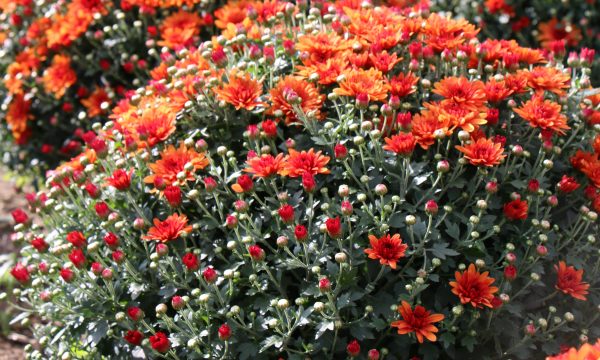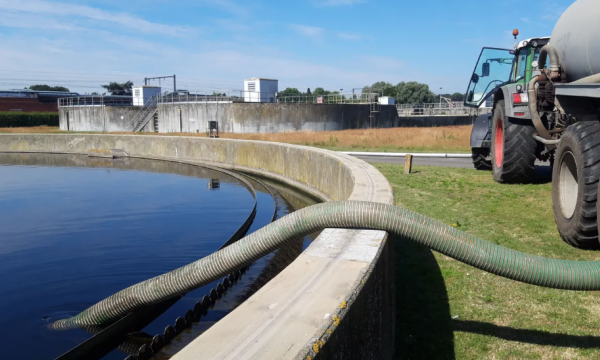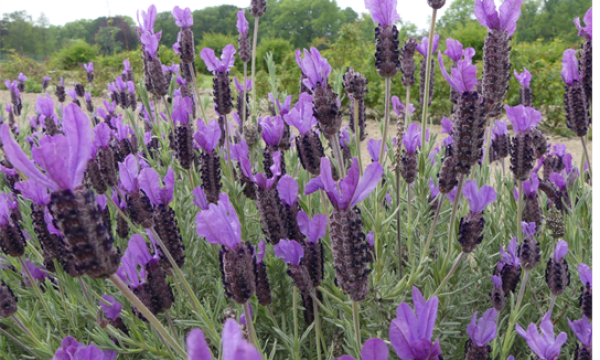Press release The air purifying effect of plants

What effect do plants have on air quality, indoors and outdoors? Which plants are best and how should they be planted for optimal air purification? The Green-Air project tells us what we need to know. Can a limited number of ferns suffice to purify the air in an office space of 9 m2 and does a green building façade have more effect on the amount of particulate matter (PM) in a narrow street than a wide-crowned tree? The amount of volatile organic compounds (VOC), gases and PM that plants effectively remove from the air depends on many factors: the amount of light, air movement, initial air pollution, leaf shape, etc.
Green-Air
The Technology Platform for Ornamental Cultivation (ILVO, PCS, UGent, HoGent), UAntwerpen and the Flemish Environmental Society have been working together in the Green-Air Operational Group for the past two years to gather all the scientific knowledge about the air purifying capacity of plants. This knowledge has been bundled in two attractive brochures. Not only interesting for ornamental growers and by extension the whole green sector, but also for you and me.
Indoor plants can purify the air at home quickly, efficiently and cheaply
Since the energy crisis of the 1970s, our buildings are now better insulated. This has created two trends: one, the air in the house is refreshed less frequently, and two, the use of synthetic materials (e.g. in insulating materials) has increased in our immediate surroundings. This concentration of harmful substances in the home and in the office can cause several complaints: headache, nausea, irritation to the nose and eyes, loss of concentration and fatigue. The main culprits are volatile organic compounds (VOCs) such as benzene and formaldehyde originating from building materials and inorganic gases such as CO and CO2 from combustion processes in poorly ventilated areas.
Fortunately there is also good news. Plants are able to purify those pollutants from the air and thus form a natural alternative to expensive filtration systems. NASA's well-known research from the 1980s on the air purifying potential of plants states that almost all of the most popular indoor plants are able to remove pollutants from the air relatively quickly. To do so, they use their roots, stomas (tiny leaf openings), waxy layers, micro-organisms and potting soil.
However, the efficiency of this purification depends on the plant species, plant architecture, air displacement, the amount of light and the initial air pollution in the area:
- The higher the concentration of pollutants, the faster the plants break them down and vice versa;
- The more light, the better the purification;
- The more air displaced, the quicker the purification;
- The higher the density of stomas and the more texture present on the leaf, the better the purification.
Which indoor plants are best?
Good options are spider plants (Chlorophytum), dragon tree (Dracaena), ivy (Hedera helix) and peace lily (Spathiphyllum). But this list is far from complete and scientists have not yet studied all the plants for their air purifying potential. Also the knowledge about how many plants of whatever kind you need to keep the air in the living area healthy is still limited. Some studies give an idea: Two ferns (Nephrolepis exaltata) or three dragon trees (Dracaena deremensis ‘Janet Graigs’) are enough to purify the air in an office of 9m², and nine pots of different sizes with different plant species can remove in 74% of the VOCs in a space of 100m³ in only 2 days.
Public green leads to net reduction of air pollution in cities
Urbanization is increasing in Flanders and in the rest of the world. It is expected that within 20-30 years, 70% of the world's population will live in urbanized areas. Plants provide important ecosystem services in such environments, including air purification. Trees, hedges, green roofs and green façades act as a natural filter and provide a net decrease in concentrations of particulate matter (PM) and harmful gases in the air. The size of the decrease is highly dependent on the local situation. In a narrow street, for example, trees with a wide crown are often less advisable because they can prevent the natural ventilation and partly serve to hold the air pollutants. A green façade that allows more air flow can be a better alternative in this case. Studies of the effect of green on air pollution also indicate that local reductions can vary greatly, from 1 to 60%.
For capturing particulate matter, conifers are generally a better choice than deciduous trees. Leaf characteristics are important here: the presence of hairs, the type of wax, the complexity of the leaf shape and the general roughness of the crown determine how much particulate matter can be caught. Air flow is the most important factor, however, as the example of the large crown in a narrow street illustrates.
Which species trap the most particulate matter?
Taking into account the local situation, some garden species are better suited to absorb PM than other species. In the top 10 are: Butterfly bush (Buddleja davidii), guelder rose (Viburnum opulus), European cornbeam (Carpinus betulus), holm oak (Quercus ilex), wayfarer tree (Viburnum lantana), Japanese rose (Rosa rugosa), common whitebeam (Sorbus aria), white horse chestnut (Aesculus hippocastanum), Douglas fir (Pseudotsuga menziesii) and field maple (Acer campestre).
Green-Air reports and brochures
The scientific partners in the Green-Air Operational Group gathered all available knowledge in two reports and two accessible brochures. Their aim is to inform the horticulture and public green sectors, environmental services and professional landscapers about the effect of green on air quality. This should enable them to make informed choices. Ornamental growers can tailor their crops to this new societal need and create new niche markets. Landscape architects and green services, in turn, are given clarity about planting choices and plants, and also supply companies, environmental services and private or public procurers of green projects can now use scientific evidence when talking about the air-purifying effects of plants.
Both brochures and reports (literature studies) are available at www.pcsierteelt.be



